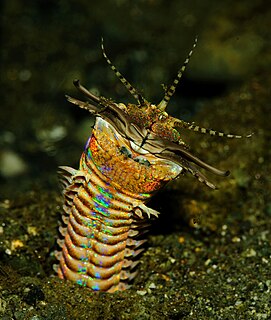 W
WFishing is the activity of trying to catch fish. Fish are often caught in the wild but may also be caught from stocked bodies of water. Techniques for catching fish include hand gathering, spearing, netting, angling and trapping. "Fishing" may include catching aquatic animals other than fish, such as molluscs, cephalopods, crustaceans, and echinoderms. The term is not normally applied to catching farmed fish, or to aquatic mammals, such as whales where the term whaling is more appropriate. In addition to being caught to be eaten, fish are caught as recreational pastimes. Fishing tournaments are held, and caught fish are sometimes kept as preserved or living trophies. When bioblitzes occur, fish are typically caught, identified, and then released.
 W
WAquarium fishery is the process of fishing wild fish for sale to private and public aquariums.
 W
WAuld Lang Syne is one of the oldest houses on the island Nantucket, Massachusetts and is located at 6 Broadway in Siasconset. The oldest part of the house was constructed around 1675 making it possibly older than the more well-known, Jethro Coffin House. Auld Lang Syne was constructedby Michael [or Micah] Coffin, who employed Native Americans to fish for him while he remained ashore to do the cooking. The house grew from a rectangular structure with a great room and two small chambers to the south. In the eighteenth century it evolved into a T-plan structure with low shed-roof extensions. It was expanded in the eighteenth and nineteenth centuries with warts on the south side, a kitchen at the north side, and a shed.
 W
WA bait machine is a vending machine that dispenses live bait, such as worms and crickets, for fishing. In the case of worms, it may be called a worm machine.
 W
WCarp is a common name for various species of freshwater fish that are sought after by some recreational fishermen. Carp are native to Europe and Asia, and belong to the family Cyprinidae. They have been introduced, with mixed results, to various other locations around the world.
 W
WThe Cliff Villa Peninsula is a promontory where two currents meet on the north-westerly point of the island of Curaçao
 W
WCrab lining is a handlining technique used to catch crabs. A piece of bait, normally the neck or leg of a chicken, is tied to one end with a weight in order to keep it from floating. The line is then cast by hand to an area approximately five to ten feet from where it is being cast. This is to ensure easy retrieval of the line and to avoid unnecessary time spent fighting currents, rocks, and other obstacles in the water. Once a crab takes the bait, the line will tighten. It is important to not tug at the line once a pull is noticed. The line must be slowly retrieved, inch-by-inch, until the crab is visible in the water. Upon visibility, a hand net may be used to capture the crab.
 W
WSeveral states in the Caspian region, including the five littoral states of the Caspian Sea, namely the Islamic Republic of Iran, Turkmenistan, Kazakhstan, the Russian Federation, and the Republic of Azerbaijan use ad hoc diplomatic relations to build trust and goodwill as well as to boost the bargaining power of their governments.
 W
WEunicidae is a family of marine polychaetes. The family comprises marine annelids distributed in diverse benthic habitats across Oceania, Europe, South America, North America, Asia and Africa. The Eunicid anatomy typically consists of a pair of appendages near the mouth (mandibles) and complex sets of muscular structures on the head (maxillae) in an eversible pharynx. One of the most conspicuous of the eunicids is the giant, dark-purple, iridescent "Bobbit worm", a bristle worm found at low tide under boulders on southern Australian shores. Its robust, muscular body can be as long as 2 m. Eunicidae jaws are known from as far back as Ordovician sediments. Cultural tradition surrounds Palola worm reproductive cycles in the South Pacific Islands. Eunicidae are economically valuable as bait in both recreational and commercial fishing. Commercial bait-farming of Eunicidae can have adverse ecological impacts. Bait-farming can deplete worm and associated fauna population numbers, damage local intertidal environments and introduce alien species to local aquatic ecosystems.
 W
WField sports are outdoor sports that take place in the wilderness or sparsely populated rural areas, where there are vast areas of uninhabited greenfields. The term specifically refer to activities that mandate sufficiently large open spaces and/or interaction with natural ecosystems, including hiking/canyoning, equestrianism, hawking, archery and shooting, but can also extend to various surface water sports such as river trekking, angling, rowing/paddling, rafting and boating/yachting.
 W
WFish are aquatic, craniate, gill-bearing animals that lack limbs with digits. Included in this definition are the living hagfish, lampreys, and cartilaginous and bony fish as well as various extinct related groups. Around 99% of living fish species are ray-finned fish, belonging to the class Actinopterygii, with over 95% belonging to the teleost subgrouping.
 W
WFish stocking is the practice of raising fish in a hatchery and releasing them into a river, lake, or ocean to supplement existing populations or to create a population where none exists. Stocking may be done for the benefit of commercial, recreational, or tribal fishing, but may also be done to restore or increase a population of threatened or endangered fish in a body of water closed to fishing.
 W
WFishbrain is a mobile app, and online platform for anglers that provides map-based tools, social networking features, fishing forecasts, and data-backed recommendations on fishing gear. Using Fishbrain, anglers can find new spots to fish and see exact catch locations on maps, which include depth information and user-generated tips and ratings. In addition to map functionality, users can obtain fishing forecasts including weather, lunar cycles, tidal charts, and more. Fishbrain also provides recommendations on when to fish based on predicted fish activity, previous user-catches, and an analysis of species behavior.
 W
W"Fishers of men" is a phrase used in the gospels to describe the mandate given by Jesus to his first disciples. Two brother fishermen, Simon called Peter and Andrew, were casting a net into the Sea of Galilee. As he commenced his preaching ministry, Jesus called them to follow him and told them that in doing so they were to become "fishers of men".
 W
WUntil the 1960s, agriculture and fishing were the dominant industries of the economy of South Korea. The fishing industry of South Korea depends on the existing bodies of water that are shared between South Korea, China and Japan. Its coastline lies adjacent to the Yellow Sea, the East China Sea and the Sea of Japan, and enables access to marine life such as fish and crustaceans.
 W
WFishing is the activity of trying to catch fish. Fish are often caught in the wild but may also be caught from stocked bodies of water. Techniques for catching fish include hand gathering, spearing, netting, angling and trapping. "Fishing" may include catching aquatic animals other than fish, such as molluscs, cephalopods, crustaceans, and echinoderms. The term is not normally applied to catching farmed fish, or to aquatic mammals, such as whales where the term whaling is more appropriate. In addition to being caught to be eaten, fish are caught as recreational pastimes. Fishing tournaments are held, and caught fish are sometimes kept as preserved or living trophies. When bioblitzes occur, fish are typically caught, identified, and then released.
 W
WIn the United Kingdom, in the early autumn, fishermen often use the name of the grayling as a by-word for their seasonal jolly: a Grayling Day is often fisherman-talk for a party. Many clubs as well as fisherman friends will organise their annual Grayling Day in the autumn when it is traditional for there to be large quantities of both food and drink, prefaced by a token amount of fishing.
 W
WHighlandtown Lake is a man-made lake located in Washington Township, Columbiana County, Ohio. It was created in 1966 when the State of Ohio built a dam impounding 170 acres (0.69 km2) of water on the upper drainage of the Little Yellow Creek. A lot of habitat improvement was done on what would be the bottom of the lake prior to the impoundment. It has about 5 miles (8.0 km) of shoreline and a maximum depth of about 26 feet (7.9 m). The lake is about 1,100 feet (340 m) above sea level.
 W
WA kelong is an offshore platform built predominantly with wood, which can be found in waters off Malaysia, the Philippines and Indonesia. Only a handful remain around Singapore due to rapid urbanisation.
 W
WMahi-mahi are swift and acrobatic game fish with striking colours. These colours darken when the fish dies The current IGFA all tackle record is 39.91 kilograms (88lb), caught in 1998 in Exuma, Bahamas by Chris Johnson of Lake Mary, Florida. Catches average 7 to 13 kilograms, and any mahi-mahi over 18 kilograms (40 lb) is exceptional. Males are often larger than females.
 W
WThe mattanza, literally 'slaughter' in Italian, is a traditional method of fishing for bluefin tuna off the coasts of Sicily and Sardinia.
 W
WMinnow is the common name for a number of species of small freshwater fish, belonging to several genera of the family Cyprinidae. They are also known in Ireland as pinkeens.
 W
WMotif Number 1, located on Bradley Wharf in the harbor town of Rockport, Massachusetts, is a replica of a former fishing shack well known to students of art and art history as "the most often-painted building in America." The original structure was built in 1840 and destroyed in the Blizzard of 1978, but an exact replica was constructed that same year.
 W
WThe reach cast is a casting technique used in fly fishing. The reach cast involves casting the fly lure over flowing water, such as a stream, and then just before the fly lands, moving the arm and fly rod in the upstream direction to arrange the fishing line so that it produces less apparent drag in the water. The technique allows the lure to more closely resemble a free-floating insect, resulting in greater chance of it being taken by a fish. Reach casting also allows an experienced caster to pitch curved casts in order to get the lures into difficult places.
 W
WThe salmon run is the time when salmon, which have migrated from the ocean, swim to the upper reaches of rivers where they spawn on gravel beds. After spawning, all Pacific salmon and most Atlantic salmon die, and the salmon life cycle starts over again. The annual run can be a major event for grizzly bears, bald eagles and sport fishermen. Most salmon species migrate during the fall.
 W
WShad is a type of fish, much valued as a sport fish. The male shad is an excellent game fish, showing multiple jumps and an occasional end-over-end; it has been called a "freshwater tarpon". The gravid female does not fight much, but is often kept for the roe. The current world record is listed by the IGFA as 11 pounds 4 ounces (5.1 kg), set at Holyoke Dam, Massachusetts, on 19 May 1986 by Robert A. Thibodo.
 W
WTailrace fishing is angling immediately below natural or man-made dams or restrictions to the flow of water on rivers, canals, streams or any other flowing current. Fishing in a tailrace requires a distinct set of skills in that lures or bait must be moved through the flowing water to the feeding spots in the currents. Hydro tailrace fishing occurs in the discharge of hydroelectric power stations below a dam. Fishing below spillways is another form of tailrace fishing in which the turbulent water below the dam creates pockets of water that trap bait fish and attract gamefish.
 W
WTaxidermy is the art of preserving an animal's body via mounting or stuffing, for the purpose of display or study. Animals are often, but not always, portrayed in a lifelike state. The word taxidermy describes the process of preserving the animal, but the word is also used to describe the end product, which are called taxidermy mounts or referred to simply as "taxidermy".
 W
WWhaling in Iceland began with spear-drift hunting as early as the 12th century, and continued in a vestigial form until the late 19th century, when other countries introduced modern commercial practices. Today, Iceland is one of a handful of countries that formally object to an ongoing moratorium established by the International Whaling Commission in 1986, and that still maintain a whaling fleet. One company remains concentrated on hunting fin whales, largely for export to Japan, while the only other one previously hunted minke whales for domestic consumption until 2020, as the meat was popular with tourists. In 2018, Icelandic whalers were accused of slaughtering a blue whale. Whaling has been temporarily paused in Iceland since 2019 as coronavirus restrictions, competition from subsidized Japanese whaling, and increasing domestic whale watching tourism have hampered the industry. It is uncertain if commercial whaling will resume in 2022.
 W
WThe World Day for the End of Fishing (WoDEF) is an international campaign launched by animal rights activists who demand the end of fishing practices. It takes place on the last Saturday of March every year.